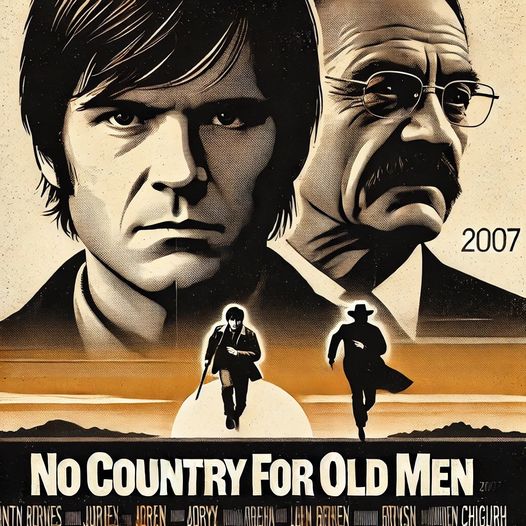No Country for Old Men (2007)

Released in 2007, No Country for Old Men is a cinematic triumph that masterfully intertwines themes of fate, morality, and the relentless nature of violence. Directed by the Coen brothers, this adaptation of Cormac McCarthy’s Pulitzer Prize-winning novel is not just a thriller; it’s a profound exploration of the human condition set against the stark backdrop of West Texas.
Plot Overview
The film follows Llewellyn Moss (played by Josh Brolin), a welder and Vietnam War veteran who stumbles upon a drug deal gone wrong while hunting. He discovers a briefcase filled with two million dollars and makes the fateful decision to take it. This choice sets off a brutal chain of events that pits him against Anton Chigurh (Javier Bardem), a cold-blooded hitman determined to retrieve the money, and Sheriff Ed Tom Bell (Tommy Lee Jones), an aging lawman struggling to make sense of a world increasingly filled with violence and chaos.
Themes and Analysis
No Country for Old Men delves deep into themes of fate and morality, prompting viewers to question the nature of good and evil. The character of Anton Chigurh serves as an embodiment of fate, ruthlessly pursuing Moss while adhering to his own twisted moral code. His philosophy—that life and death are ultimately decided by chance—leaves a chilling impact, making viewers ponder the randomness of existence.
Sheriff Bell’s reflections throughout the film offer a counterpoint to Chigurh’s nihilism. As he grapples with the changing landscape of crime and violence, Bell represents the struggle to uphold a sense of justice in a world that seems increasingly indifferent to it. His character highlights the generational gap in dealing with morality, as he reflects on the past’s simplicity compared to the complexities of the present.

Cinematography and Score
The film’s cinematography, helmed by Roger Deakins, is nothing short of breathtaking. The vast, desolate landscapes of Texas are captured with an eye for detail that emphasizes both beauty and isolation. The use of natural light enhances the film’s realistic feel, immersing viewers in its world.
Accompanying the striking visuals is a haunting score, with minimalistic sound design that amplifies the tension throughout. The absence of a traditional musical score in key scenes heightens the sense of dread, making every silence palpable and every moment fraught with potential violence.
Awards and Recognition
No Country for Old Men was met with critical acclaim, receiving four Academy Awards, including Best Picture, Best Director for the Coen brothers, Best Supporting Actor for Javier Bardem, and Best Adapted Screenplay. Its impact on the thriller genre and its exploration of philosophical themes have solidified its status as a modern classic.
Conclusion
In a cinematic landscape often dominated by flashy action and predictable narratives, No Country for Old Men stands as a testament to the power of storytelling that resonates on a deeper level. Its exploration of fate, morality, and the harsh realities of life invites viewers to reflect long after the credits roll. As relevant today as it was upon release, this film remains an essential viewing for those seeking not just entertainment, but a thought-provoking experience that challenges our understanding of good and evil in a chaotic world.











